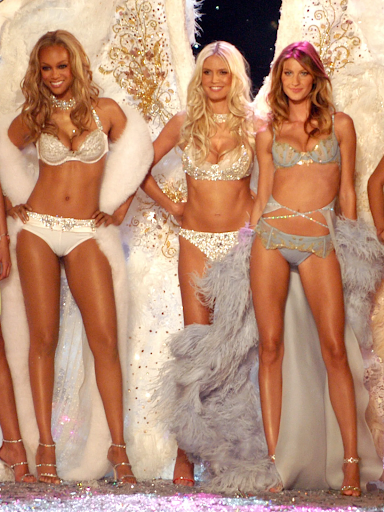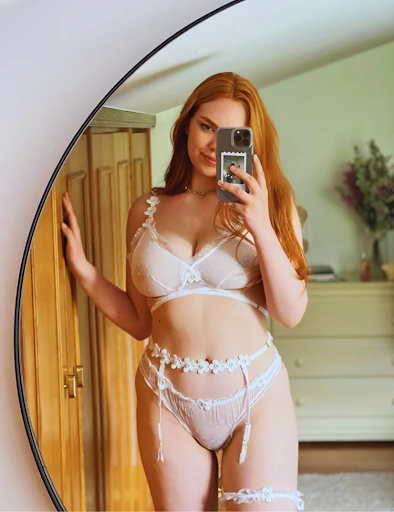In recent years, the world of fashion has been agog with the idea of inclusivity. Needless to say, the lingerie side isn’t any different. The lack of representation across the board has grabbed the attention of newer lingerie brands that have now stepped up to the challenge.
For a long time, padded push-up bras and slim, light-skinned models shaped the public view of what “sexy” looks like. However, many lingerie brands are responding to voices of consumers who do not fit into this demography and want to see themselves better represented.
These newer brands are now selling inclusivity. From offering a wider range of cup sizes and “nude” shades to celebrating diversity in campaigns and on runways, these lingerie brands are embracing inclusivity.
Empress Mimi is one of those brands. We believe that every woman is beautiful, and our lingerie reflects that.
The impact of the media

Over the years, the media representation of lingerie models has historically reinforced unrealistic and unattainable beauty standards, impacting the self-esteem of individuals who do not fit the mold.
Because society and norms shape our beliefs, there are different ways to view body image. Women have it pretty tough when the media continuously promotes the “ideal” physique and discreetly promotes comparison.
For instance, one of the most popular lingerie brands, Victoria’s Secret, has been renowned for the attractive, sensual ladies who advertised its products. Victoria’s Secret excels in slow motion shots, sensual gazes, and close-ups of each model. Their commercials frequently featured incredibly attractive models in beautiful lingerie sets with glowing skin, tousled hair, and slim frames to promote their products.
In the long run, this had the effect of gradually conditioning many women who do not fit into this category to believe that being slender is the only way to define “beautiful” or “sexy.”
Celebrating diversity
Inclusive and diverse lingerie fashion is the way forward. The lingerie industry is being impacted more than ever by socio cultural shifts like the #MeToo movement and the growing demand for body-positive advertising.
Consumers are accepting lingerie that acknowledges alternative sex appeal, and they are increasingly choosing brands that value comfort, fit, and body acceptance.
It is very important for brands to celebrate and include different body types and skin tones.
Slender people and plus size people deserve to be equally represented. The various body types, such as apple shape, pear shape, hourglass, rectangle, and inverted triangle, must be considered.
In the same vein, warm skin tones, cool skin tones and neutral skin tones also need to be considered when designing these lingerie pieces, like Empress Mimi does with our Mimi underwear. This way, it shows that the brand values every possible customer and has created a product that can cater to the needs of literally everyone.
The role of the industry

Inclusivity isn’t just about selling lingerie to diverse customers. It’s about doing so visibly. This means using models of all shapes, sizes and colors in fashion shows and campaigns.
For instance, consider Lonely Lingerie, which promises to represent women realistically by forbidding the use of Photoshop or even hair and makeup artists in their advertising campaigns. Models for the brand come in 35 various bra sizes and come from various socioeconomic backgrounds. The founder Helene Morris said that when she started the brand in 2009, “there was no one in the lingerie world who was speaking in a way we related to at all.” Her brand’s “Lonely Girls” project featured senior models, breastfeeding mothers, pregnant women and women with disabilities, whose photos were all taken in natural light.
Empress Mimi also considers inclusivity to be extremely important. We don’t see our lingerie as simply an element of clothing – for us, it is wearable art. And just like with other forms of art, everyone is entitled to it, no matter their size or color.
The impact of inclusivity
The lingerie sector is seeing a rise in racial diversity as well. Consider the Rihanna-owned brand, which has won accolades for offering a range of “nude” tones to suit various skin tones. Similarly, ThirdLove’s newest collection of T-shirt bras features nine “naked” color options. When it debuted in 2014, the London-based distributor Nubian Skin was among the first companies to offer nude tones for women of color.
“We saw many brands debut their nude tones in the years immediately after the launch of Nubian Skin. Some brands have since rolled back (their selection) because they didn’t market them very well. If you’re going to sell nude tone bras in deeper skin tones, it would help to use models of color”. This was the statement made by someone from Nubian Skin.
The future of inclusivity
These are practical attempts by brands in the lingerie industry who have embraced and promoted inclusivity by expanding size ranges and offering a variety of skin tones in their products. It is obvious that the industry also has a large role to play and has taken up the challenge.
Inclusivity embraces body positivity. Diversity is generally welcomed as a sign of acceptance in society and brand campaigns. Individual self-esteem and overall body image could be affected by inclusivity in lingerie. Providing customers with the same product for people of different body types and skin tones provides a realistic, individual element to the shopping experience, building trust between them and the company.
Consequently, everyone should support and promote body positivity and diversity because they are important components of today’s society and industry. Brands that have embraced and implemented inclusion could serve as great models for other businesses.
To understand what a diverse, inclusive brand looks like and how it functions, they may check out their campaigns, social media accounts, and websites. They can also collaborate with diverse models and creators and improve by listening to customer feedback.
Conclusion
Finally, the idea of seeing the same product on many body types and skin tones promotes consumer acceptance of businesses and their high standards. Body positivity knows no bounds, and corporations ought to move away from the old culture and promote various body types and skin tones.
